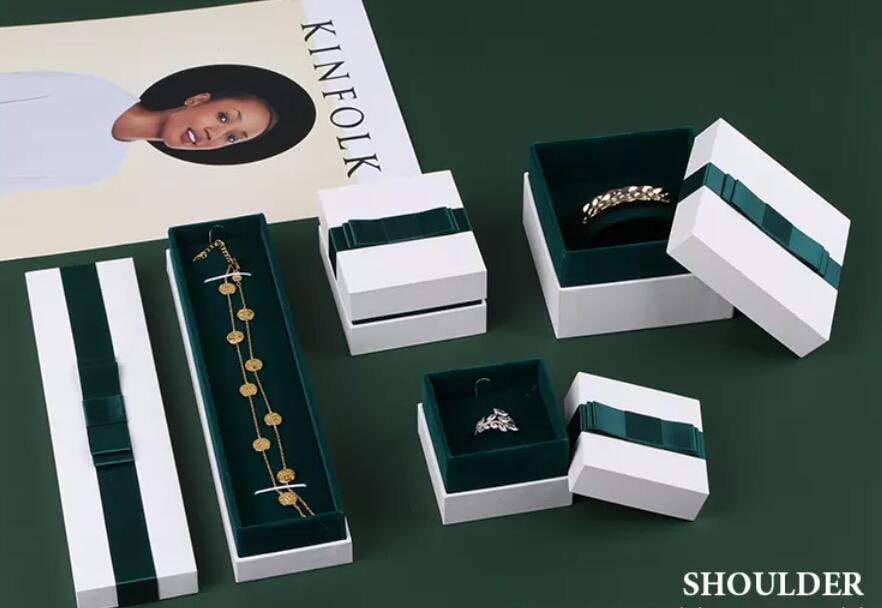You can share
- Share to Facebook
- Share to Google+
- Subscribe to our
- Share to Linkedin
- Share to Twitter

Packaging has become the core battlefield for brand premium in today's fiercely competitive jewelry industry. Research shows that the average time for high-end jewelry customers to unpack is 3 minutes and 28 seconds, and every detail affects brand awareness. This article will deeply analyze the strategic points of cooperation between jewelry brands and jewelry packaging factories, from supplier screening to delivery acceptance, helping you continuously improve your jewelry sales performance.
(1) Product positioning classification
Product line level:
Limited collection, 15-25%, micro-carving/precious metal inlay |
Regular series, 8-12%, hot stamping/laser engraving |
Promotional drainage, 3-5%, silk screen/embossing |
(2) Technical parameter list
- Drop test standard (such as 3 times without damage at a height of 1.2m)
- Environmental certification level (FSC/REACH/SGS)
- Special functional requirements (constant humidity liner/anti-theft magnetic buckle)
(1) Capacity matching: Monthly capacity must be ≥ 120% of the brand's quarterly demand
(2) Process database: Requires the provision of a set of process solutions for similar products in the past
(3) Quality control system: ISO9001 certification is the basic threshold, and high-quality factories must pass ISO14067 carbon footprint certification
(4) Proofing response speed: The industry benchmark is 3-7 working days
(5) Raw material traceability: It must be traceable to the specific forest farm/mine (to prevent channel risks)
(6) Patent reserves: Prioritize manufacturers that hold packaging structure patents
(7) Crisis management cases: Review the time limit for handling past customer complaints (high-quality factories ≤ 48 hours to resolve)

▶ Strategic cooperation system (applicable to annual purchase amount > 3 million)
Advantages:
- Obtain exclusive production line and engineering team
- The mold fee sharing ratio can be negotiated to less than 30%
- Prioritize the use of new materials/processes
Risks: Exclusive terms must be signed to limit flexibility
▶ Project-based cooperation (preferred for small and medium-sized brands)
Operation points:
- Sign contracts with different manufacturers for different product lines
- Re-compare prices with more than 3 suppliers every quarter
- Require manufacturers to open production process visualization systems
▶ Joint R&D model (applicable to innovative brands)
Case reference:
Pandora and the packaging factory jointly built a laboratory to use consumer unpacking data to guide research and development, shortening the packaging iteration cycle by 40%.
(1) Key points of drawing conversion
- The design draft needs to mark the three-dimensional dimension tolerance (within ±0.3mm)
- Color management uses the Pantone+CMYK dual-standard system
- The structural drawing must include the load-bearing test points
(2) Proofing confirmation process
Preliminary sample verification: check the basic structure and size adaptation
Precision sample test: simulate transportation vibration + temperature and humidity changes
(1) Raw material entry inspection
- Paper weight error ≤±3gsm
- Metal accessories salt spray test ≥48 hours
- Glue VOC emission <50μg/m³
(2) Process sampling mechanism
- First piece inspection: full inspection of the first 5 pieces in each section
- Inspection frequency: random inspection of 20 pieces per hour
- Key node: hot stamping temperature records need to be collected every second
(3) Final inspection standard example
- Lid opening and closing force: 0.5-1.2N·m
- Color difference range: ΔE≤1.5 (detected by spectrophotometer)
- Cleanliness requirement: dust particle count <500/m³
(1) Mold cost sharing plan
- Minimum order quantity below 3,000 pieces: brand bears 70% + manufacturer 30%
- Minimum order quantity above 5,000 pieces: manufacturer bears the full amount
- Secondary use: the original brand enjoys priority use rights
(2) Logistics cost compression techniques
- Use flatbed transportation (saves 40% space compared to assembly transportation)
- Seasonal staggered ordering (freight costs are 12% lower in March and April)
- Combine with other brands to consolidate containers (reduce sea freight costs by 20-35%)
(1) Establish a quality traceability file
- Samples of each batch are kept for at least 2 years
- Use blockchain technology to record production data
- Locate the problem link within 24 hours of customer complaints
(2) Innovative value-added services
- Packaging recycling program (incentive customers to return and get discot coupons)
- Old box refurbishment service (cost is about 30% of new products)
- Digital packaging (NFC chip records circulation information)
From transaction to symbiosis - Reconstructing the value of the supply chain, high-quality packaging cooperation should achieve:
- Cost reduction of 8-15% (through three-year cooperation)
- The new product launch cycle was shortened by 25 days
- Packaging-related customer complaint rate <0.3%
It is recommended to conduct supplier evaluation every year and analyze from the three dimensions of quality, innovation, and ESG. When the packaging factory becomes a co-creator of the brand experience, you will gain not only the container but also the strategic fulcrum for leveraging the market.